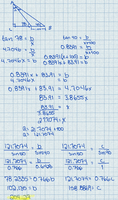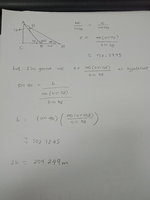Dirty.Rotten.Imbecile
New member
- Joined
- Jun 19, 2017
- Messages
- 21
At a certain distance from a 20 storey building, you measure the angle of elevation to the 10th floor to be 40 Deg. After walking 100 m closer to the building, you measure the angle of elevation to the same 10th floor to be 78 deg. How high is the 20th storey?
I drew a diagram it I have two variables in the resulting equation so I am not sure where to go with it. This problem is for a practice test but the unit never covers a problem like this at all.

I drew a diagram it I have two variables in the resulting equation so I am not sure where to go with it. This problem is for a practice test but the unit never covers a problem like this at all.



